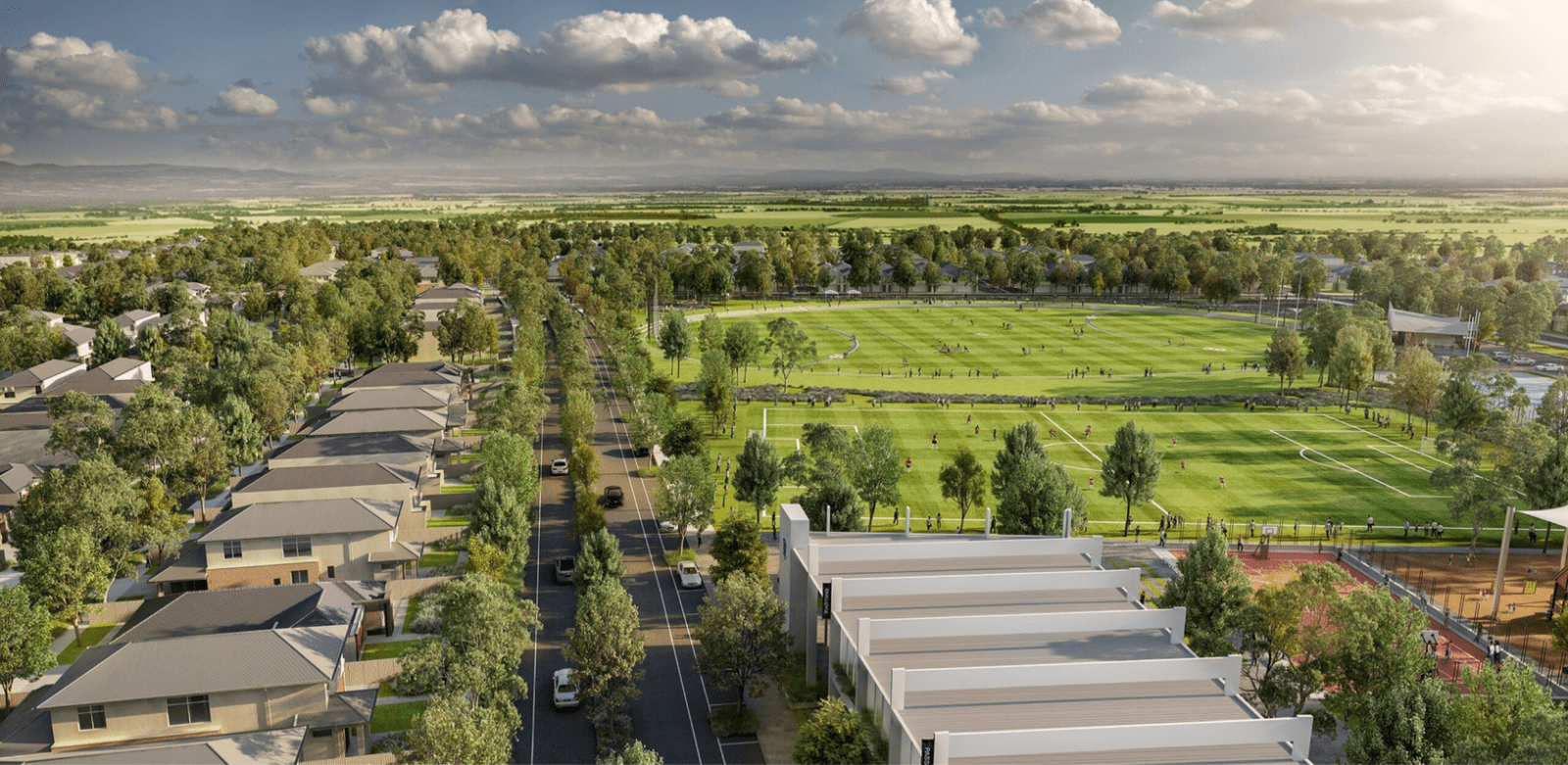
The St Yves development at Roseworthy north of Adelaide has created a residential community over the fence from prime agricultural land, and more look set to follow. Photo: Land Vision Group
SOUTH Australia’s farming and livestock groups have come out in opposition to the SA Government’s proposal to rezone some highly productive agricultural land for housing under the Greater Adelaide Regional Plan (GARP).
Released last week, the plan seeks to rezone some Environment and Food Production Areas in a bid to allow for a total of 61,500 homes to be built in the Two Wells and Roseworthy regions north of Adelaide, Murray Bridge to the west, and Goolwa, Middleton, and Victor Harbor to the south.
GPSA chief executive officer Brad Perry said while SA grain producers understood the pressing need for more housing, the removal of land from the EFPA risked undermining long-term food security, and the ability for SA’s grain sector to meet domestic and global demand.
“Once productive cropping land is lost to housing development, it is lost forever, and GPSA reiterated this through our submissions to the state government during the consultation processes,” Mr Perry said.
“The state government argues that the proposal will only see a small portion of agricultural land rezoned, but we don’t accept that any productive cropping land, which in many instances is also home to livestock production, should be the sacrificial lamb for housing development.”
Mr Perry said GPSA was particularly concerned about the increasing trend of high-quality farming land being reallocated for housing, arguing the long-term implications have not been fully understood.
“Agriculture, and grain production in particular, is a cornerstone of the South Australian economy, and there must be a careful balance between urban growth and protection of food-producing land.”
“The EFPA was introduced by the South Australian Parliament to provide certainty for food production.
“Amending this protection to encourage urban sprawl sets a concerning precedent and could open the door for further erosion of agricultural land for the other proponents who want access to cropping land for alternative purposes outside of farming.”
In addition to the loss of arable land, GPSA has highlighted the challenges associated with housing developments bordering active farming areas.
“Having residential housing adjacent to broadacre cropping zones presents its own challenges, including conflicts over spray drift, dust, noise, and farming hours,” Mr Perry said.
“These issues are not just theoretical — they’re already being experienced by grain producers where farming land has been rezoned, and residential estates built near them, and will only intensify if more farmland is converted into housing.”
Mr Perry said an audit to identify less productive tracts of land within the targeted regions could be worth considering as helping to provide land to build housing, but without impacting agricultural production so heavily.
This less productive land, for example on sloping sites, would potentially be more expensive for developers to turn into housing than flat paddocks.
Impact on livestock
Livestock SA chair Gillian Fennell said the organisation understood and appreciated the need for affordable housing, also a challenge for the red meat and livestock industry in many regional areas, but “swapping crops for concrete was not the answer”.
“South Australian agriculture feeds and clothes people living in our state and nation and is an integral part of global food security,” Ms Fennell said.
“Livestock SA is concerned that within a few short years, the government’s rhetoric has gone from acknowledging our food-producing and agricultural areas ‘assets to be protected’ to simply house blocks.”
“Urban growth should not come at the cost of our ability to produce food and fibre.”
Ms Fennell said the cost-of-living crisis was impacting all South Australians, but pushing agriculture into less reliable producing areas which required higher inputs would only further increase food prices in the longer term.
“South Australia is already one of the most urbanised jurisdictions in Australia, with four out of five people living in the Greater Adelaide area.”
“Livestock SA would welcome a future focussed discussion about how we can provide greater opportunities and supporting policies, including housing affordability, to encourage population growth in regional towns rather than further urban sprawl into prime agricultural land.”
“Well-planned regional development can provide economic benefits, ease housing pressure in the city, and strengthen rural communities.”
Livestock SA has urged the SA Government to halt proposed changes until the 2027 EFPA review can be completed with full consultation, ensuring agriculture has a permanent voice in planning decisions that impact its future.
Accumulation area
The Roseworthy district includes a major receival and accumulation site for Viterra, SA’s major bulk handler.
“Roseworthy is a key, strategic upcountry site in our network,” a Viterra spokesperson said in a statement.
“It plays a significant role in supporting local grain growers in the region and connecting them with domestic and international consumers.
“We are assessing the potential impact of the announced Greater Adelaide region plan and will engage with government and other stakeholders as needed.”
Source: Grain Producers SA, Livestock SA, Viterra

HAVE YOUR SAY